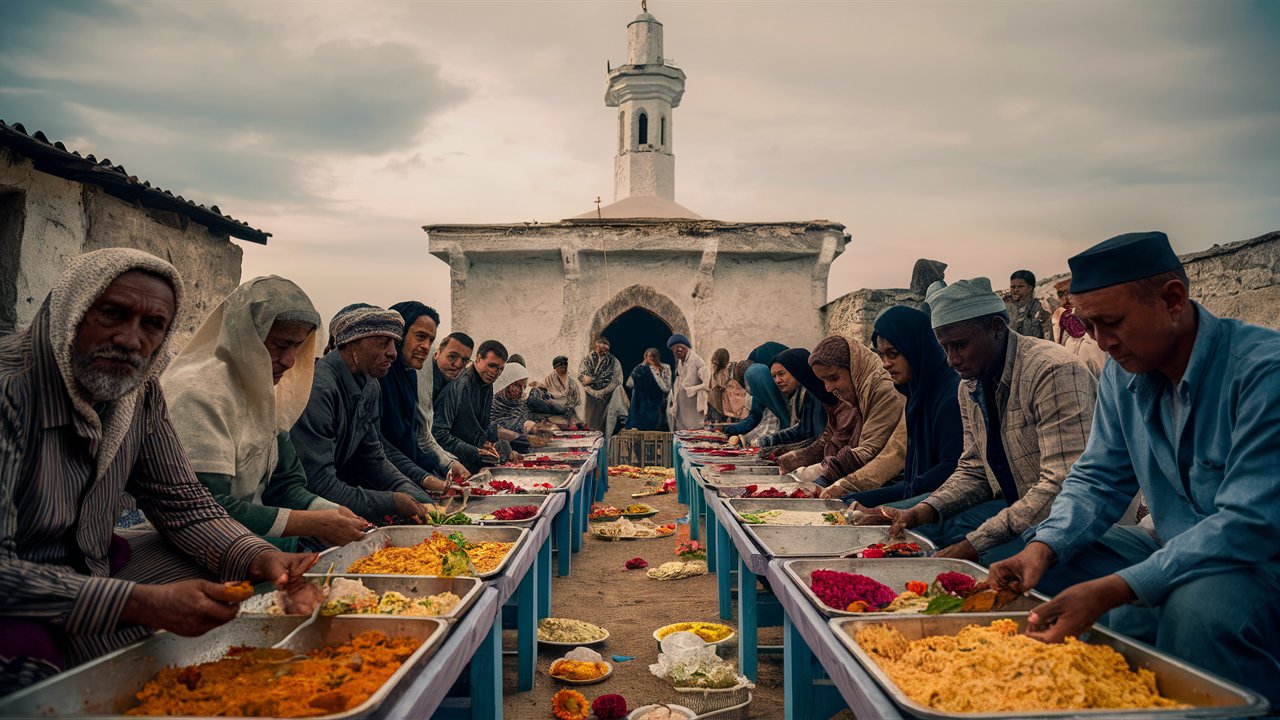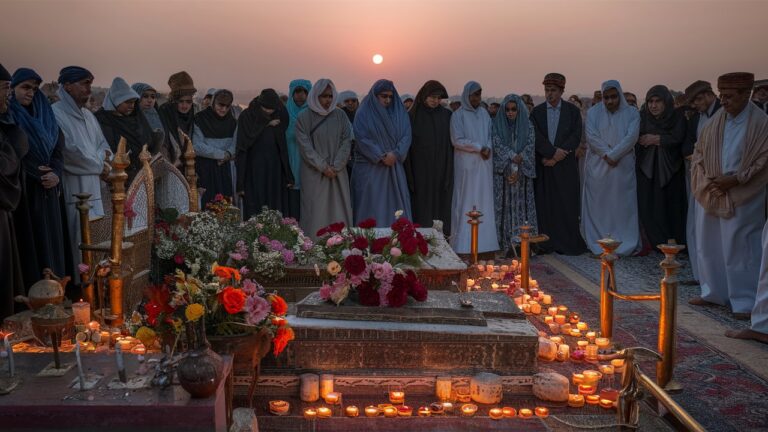The act of honoring the dead in Ahmed and Zarga is a deeply rooted cultural and spiritual tradition that embodies respect, remembrance, and community. These ceremonies are not only about mourning but also about celebrating life, legacy, and the eternal bond between the living and the departed. In both Ahmed and Zarga, practices of remembrance reveal centuries of ritualistic customs, religious values, and collective expressions of grief and gratitude. By understanding these traditions, we can gain insight into how communities preserve dignity for the deceased while strengthening social unity among the living.
The Cultural Importance of Honoring the Dead
In Ahmed and Zarga, honoring the dead goes beyond ritual—it is a cultural duty. Families often believe that paying respect to the departed ensures peace for their souls and blessings for the living. These traditions include recitations of prayers, storytelling, communal gatherings, and symbolic offerings. Elders in both towns emphasize that failing to honor the dead can be seen as dishonor to the family name and lineage. Such practices allow generations to maintain continuity, ensuring that cultural identity is passed down without erosion.
Religious Practices in Ahmed and Zarga
Religious devotion plays a central role in memorial ceremonies. In Ahmed, communities often gather at mosques where Qur’anic recitations are offered in memory of the deceased. In Zarga, similar practices exist, but with more emphasis on collective prayer sessions where multiple families join together. These gatherings symbolize unity, humility before God, and the reminder of mortality. Religious leaders provide sermons highlighting the importance of compassion, remembrance, and preparing for the afterlife. By integrating faith into the process of mourning, both Ahmed and Zarga merge spirituality with communal solidarity.
Ceremonial Rites and Rituals
The rituals of funerals and commemorations in Ahmed and Zarga involve detailed preparation. Families organize processions where participants accompany the deceased to their final resting place. Offerings such as flowers, food, and candles are presented as tokens of respect. In some cases, families distribute charity in the name of the deceased, reflecting the belief that good deeds extend beyond life. In Ahmed, women often play a central role in preparing food for mourners, while in Zarga, men lead the funeral processions. These cultural variations enrich the shared value of honoring life after death.

Community Gatherings and Social Bonds
Honoring the dead in Ahmed and Zarga is not limited to family circles—it is a communal responsibility. Entire neighborhoods come together to provide emotional support, financial assistance, and participation in ceremonies. Social bonds are strengthened when individuals extend hospitality and solidarity to mourning families. These gatherings serve as moments of unity, where disputes are often set aside, and compassion becomes the guiding principle. By transforming grief into communal strength, Ahmed and Zarga demonstrate how mourning can reinforce resilience and togetherness.
Symbolism in Traditional Offerings
The offerings made in memory of the deceased carry symbolic weight. Food, water, incense, and flowers are more than mere objects; they represent life, purity, continuity, and spiritual elevation. In Ahmed, dates and water are commonly distributed, symbolizing sustenance and divine blessing. In Zarga, families may burn incense to purify the space and create an atmosphere of solemnity. These symbolic gestures underscore the belief that the deceased continue to be part of the living community in spiritual form, deserving of ongoing respect.
The Role of Oral Traditions and Storytelling
Storytelling is another integral aspect of honoring the dead. Elders recount the lives of the departed, sharing tales of wisdom, bravery, and generosity. This oral tradition keeps memories alive while offering younger generations role models to emulate. In Ahmed, stories often highlight spiritual devotion and humility, while in Zarga, they emphasize community leadership and resilience. Through this cultural practice, the dead are remembered not with sorrow alone but also with admiration and inspiration.
Modern Adaptations of Traditional Practices
As societies evolve, so too do the ways communities in Ahmed and Zarga honor their dead. Urbanization and migration have influenced ceremonial practices, leading to the adoption of new methods such as digital memorials, online prayer groups, and virtual gatherings for those unable to attend physically. Despite these changes, the core values of respect and remembrance remain intact. Families now balance traditional customs with modern conveniences, ensuring that rituals remain relevant in contemporary life.
Why Honoring the Dead Matters Today
In today’s fast-paced world, the traditions of Ahmed and Zarga remind us of the importance of slowing down to reflect on mortality and legacy. Honoring the dead fosters empathy, teaches humility, and strengthens identity. It bridges generational gaps by connecting youth to ancestral traditions, ensuring that heritage continues unbroken. Most importantly, these practices instill a collective sense of belonging, reminding communities that in honoring the past, they are shaping a more compassionate future.
Conclusion
The traditions of honoring the dead in Ahmed and Zarga reveal a profound blend of spirituality, cultural values, and community resilience. These practices are not merely rituals but powerful expressions of respect, unity, and remembrance. By sustaining these customs, communities safeguard both memory and identity, ensuring that the departed continue to inspire the living. As modern influences reshape these traditions, the essence remains unshaken: to honor is to preserve, to remember is to strengthen, and to celebrate life is to transcend death.
FAQ
1. What are the main rituals for honoring the dead in Ahmed and Zarga?
The rituals include funeral processions, communal prayers, offerings such as food and incense, storytelling, and charity in the name of the deceased.
2. Why are community gatherings important during mourning?
They provide emotional support, reinforce social bonds, and create a sense of unity and resilience within the community.
3. How are traditional practices adapting to modern times?
Modern adaptations include digital memorials, virtual gatherings, and online prayers, which allow communities to honor the deceased even across distances.
4. What role does religion play in honoring the dead?
Religion provides the spiritual foundation for these ceremonies, with Qur’anic recitations, sermons, and prayers central to the remembrance process.
5. Why is honoring the dead considered vital in Ahmed and Zarga?
It preserves cultural heritage, ensures dignity for the deceased, strengthens community bonds, and teaches younger generations about values of respect and remembrance.
